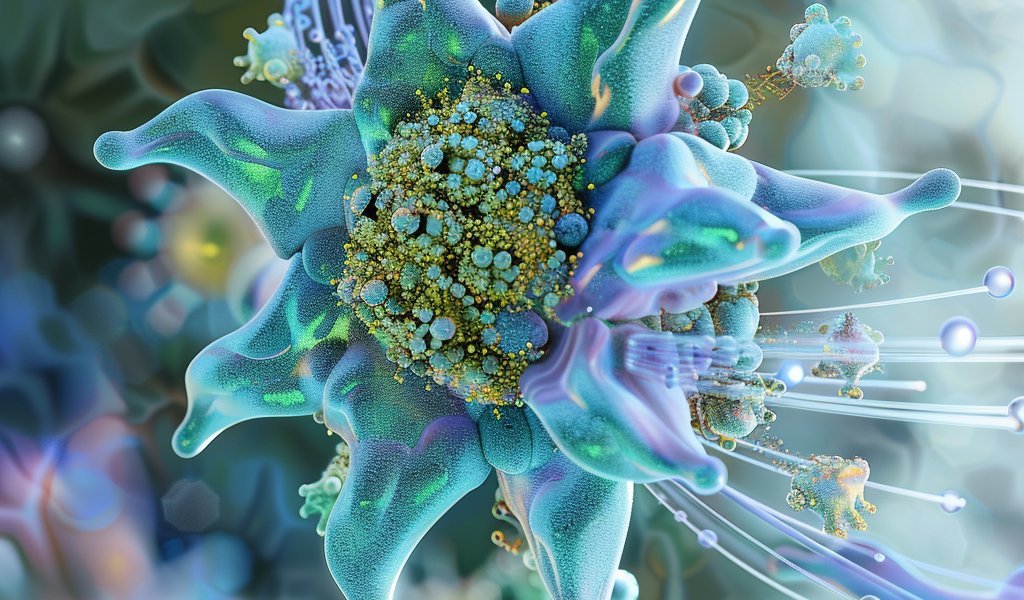Texas A&M Researchers Unveil Nanotechnology to Combat Aging and Enhance Mitochondrial Function
In a groundbreaking development in the field of biomedical engineering, researchers at Texas A&M University have unveiled an innovative approach to combat aging and related diseases by harnessing the power of nanotechnology. Central to this research is the focus on mitochondria, the cellular powerhouses responsible for energy production. As individuals age or encounter chronic illnesses, mitochondrial function often declines, leading to fatigue, tissue degeneration, and a host of age-related ailments.
Mitochondria play a crucial role in maintaining overall health and vitality, and their diminished capacity can significantly impact the recovery times for activities that were once easily manageable. Traditional treatments for age-related conditions, such as type 2 diabetes, Alzheimer’s disease, and Parkinson’s disease, have primarily centered around symptom management. However, the team at Texas A&M, led by Dr. Abhay Singh, is pioneering a new strategy aimed at revitalizing mitochondrial function directly.
The researchers have developed a novel form of nanoparticles known as molybdenum disulfide (MoS₂) nanoflowers. These unique structures, aptly named for their flower-like appearance, possess atomic vacancies that can stimulate the regeneration of mitochondria, thereby enhancing cellular energy production. Their findings, published in the esteemed journal Nature Communications, mark a significant step forward in the quest for therapies that address the root causes of age-related diseases rather than merely alleviating symptoms.
Dr. Akhilesh Gaharwar, the Tim and Amy Leach Professor and Presidential Impact Fellow in the Department of Biomedical Engineering at Texas A&M, emphasizes the potential of these nanoflowers. “These findings offer a future where recharging our cells becomes possible, extending healthy lifespans, and improving outcomes for patients with age-related diseases,” he stated. This innovative approach could revolutionize the treatment landscape for conditions such as muscle dystrophy, diabetes, and neurodegenerative disorders.
The research team discovered that the atomic vacancies within the MoS₂ nanoflowers play a pivotal role in stimulating the molecular pathways responsible for mitochondrial cell replication. By increasing adenosine triphosphate (ATP) production, mitochondrial DNA, and cellular respiration, these nanoparticles could significantly enhance mitochondrial function.
Collaboration was key to this research, with contributions from various Texas A&M faculty and students. Dr. Vishal Gohil from the Department of Biophysics and Biochemistry provided critical insights into the mechanisms that could facilitate improvements in mitochondrial function. “This discovery is unique,” Dr. Gohil remarked. “We are not just looking at a temporary fix but rather a sustainable method to enhance cell energy production at the source.”
The implications of this research extend far beyond theoretical applications. By effectively recharging mitochondria, the nanoflowers could lead to practical treatments that enhance the quality of life for individuals suffering from debilitating conditions associated with aging. This could herald a new era in regenerative medicine, where the focus shifts from merely managing diseases to actively promoting cellular health and longevity.
As the research progresses, the team at Texas A&M aims to further explore the potential applications of MoS₂ nanoflowers in clinical settings. The hope is that these advancements will not only provide new treatment options for existing diseases but also pave the way for preventative strategies that could mitigate the effects of aging at a cellular level.
This work exemplifies the intersection of nanotechnology and biomedicine, showcasing how advances in material science can lead to profound changes in our understanding and treatment of health issues. As researchers continue to uncover the mechanisms behind mitochondrial function and its impact on overall health, the future looks promising for developing innovative therapies that could enhance human longevity and well-being.
In summary, the development of MoS₂ nanoflowers represents a significant leap forward in the quest to recharge our cells and combat the effects of aging and disease. With continued research and collaboration, the potential for these nanoparticles to transform the landscape of modern medicine is immense, offering hope to millions affected by age-related conditions.





